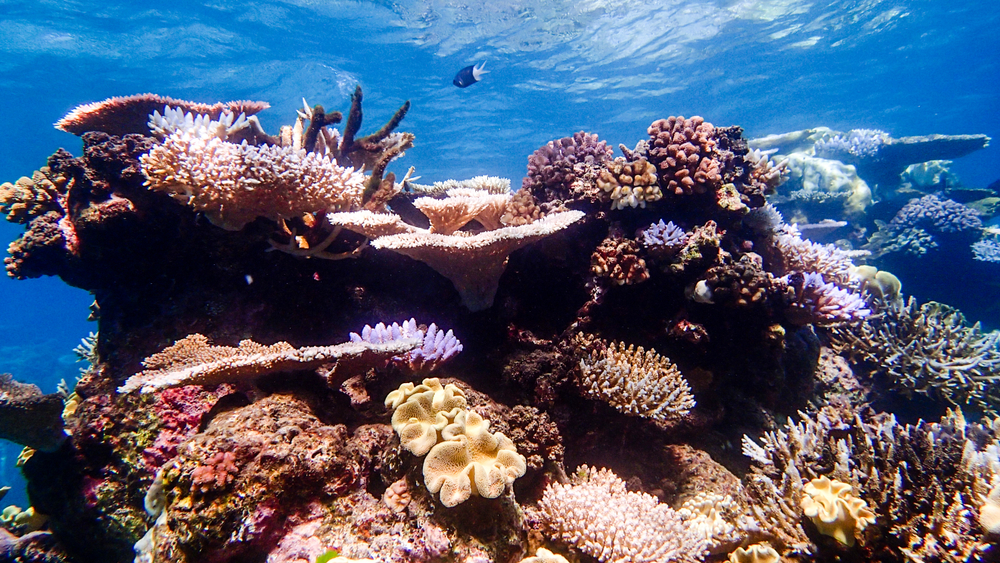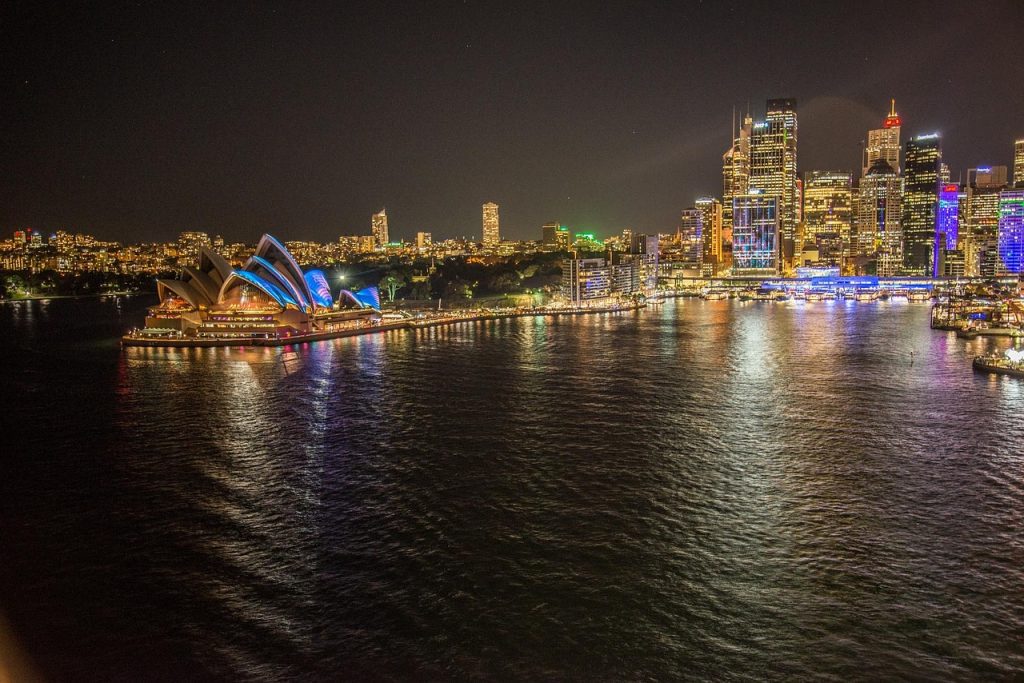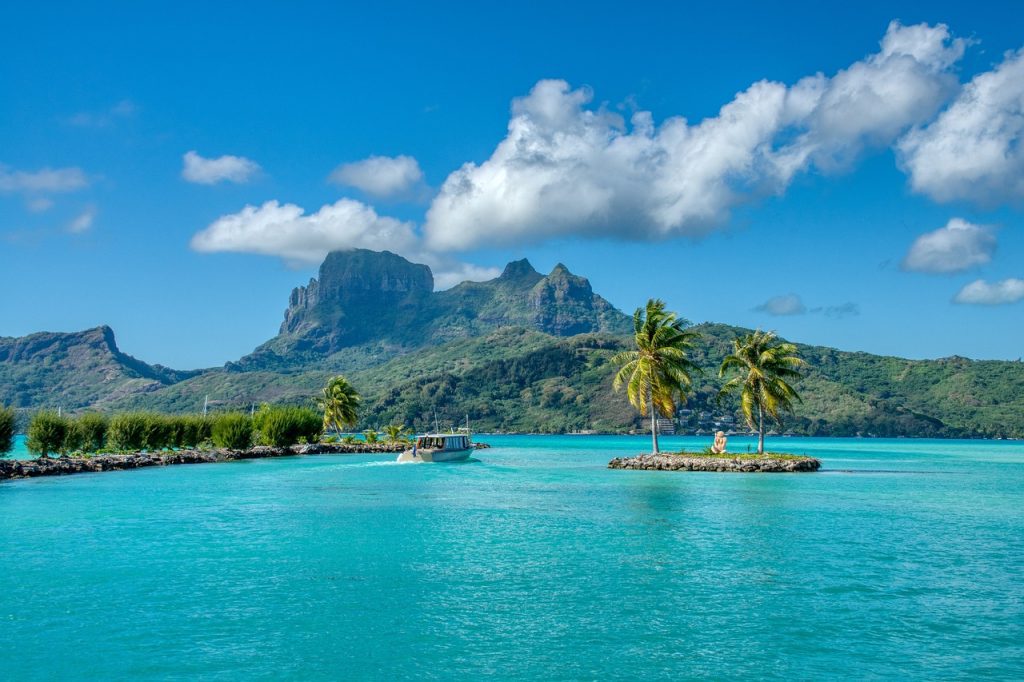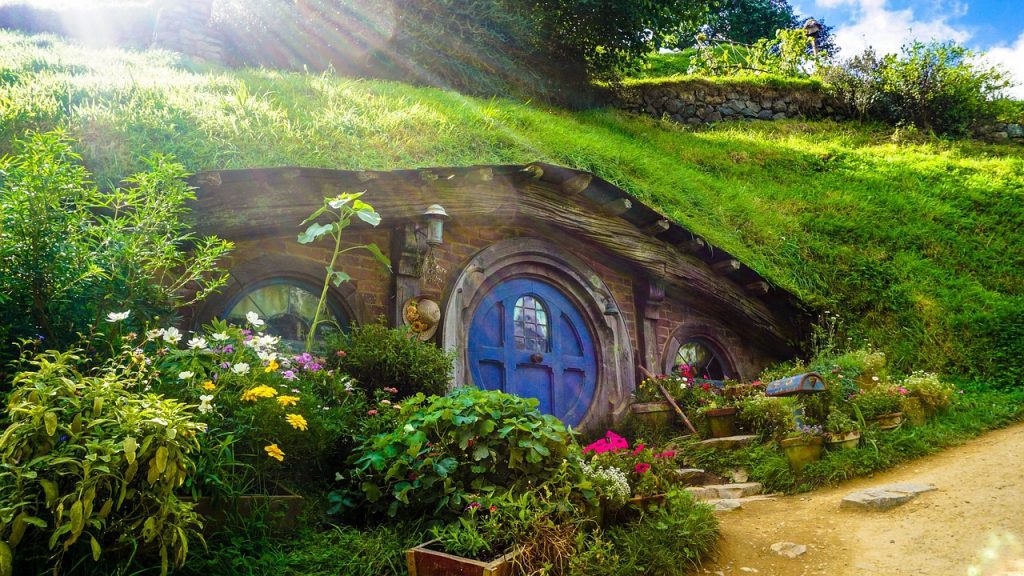The Great Barrier Reef is one of the Seven Natural Wonders of the World. It is a breathtaking underwater paradise teeming with vibrant marine life and stunning coral formations. Stretching over 2,300 kilometers along the coast of Queensland, Australia, it’s a dream destination for divers, snorkelers, and nature enthusiasts. Knowing when is the best time to visit the Great Barrier Reef is essential.
In this guide, we’ll explore the seasons, weather conditions, and other factors to help you plan your perfect Great Barrier Reef adventure.
Best Time to Visit the Great Barrier Reef Based on the Weather:
The weather plays a pivotal role in your Great Barrier Reef experience. Let’s break it down by season:
Summer (December to February):
The temperatures during these summer months range from 75°F to 88°F (24°C to 31°C). This is Australia’s summer season which means warmer and more humid weather. The water is clear and it has excellent visibility for underwater activities. There are occasional tropical rain showers and the stinger jellyfish are present. This is considered the perfect time for diving, snorkeling, and enjoying water sports.
Autumn (March to May):
The temperatures during these months range from 70°F to 84°F (21°C to 29°C). It is pleasant weather with less humidity compared to the summer months. This is an ideal tie for those who prefer less crowded conditions. The marine life is still active, making it a great time for diving and snorkeling. The rainfall starts to decrease allowing for more sunny days.
Winter (June to August):
The temperatures during these months range from 64°F to 77°F (18°C to 25°C). This is the dry season with lower humidity and cooler nights. The visibility for diving and snorkeling is excellent. This is the peak tourist season, so book accommodations and activities in advance. The minimal rainfall and calmer waters makes it ideal for reef exploration.
Spring (September to November):
The temperatures range from 70°F to 84°F (21°C to 29°C). This season is similar to autumn with fewer crowds creating a quieter visit. The marine life activity starts to increase as the water warms up. There are occasional rain showers, but generally sunny and pleasant. This season represents a good balance between affordable prices and enjoyable weather.
Narrowing Down the Best Month to Visit the Great Barrier Reef
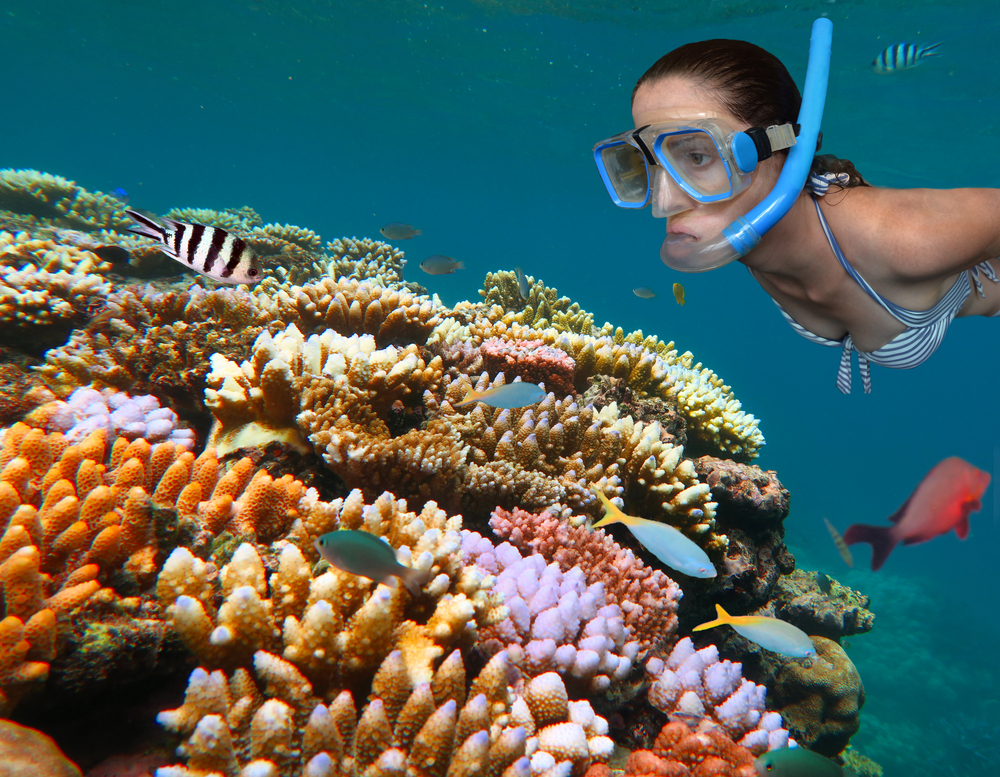
The best month to scuba dive the Great Barrier Reef typically falls between June and August. During these winter months in Australia, you can expect favorable conditions for scuba diving, including:
- Ideal Water Temperature: Water temperatures during this period range from 64°F to 77°F (18°C to 25°C). It’s comfortable for diving without the excessive heat of summer.
- Excellent Visibility: Diving visibility is at its best during the winter months, often exceeding 100 feet (30 meters). This clear water allows you to fully appreciate the vibrant marine life and stunning coral formations.
- Dry Season: Winter is the dry season in the Great Barrier Reef region. You can expect minimal rainfall, resulting in calm seas and sunny days.
- Active Marine Life: Many species of marine life, including colorful coral and fish, are more active during the winter months. You’ll have a better chance of encountering larger marine species like sharks and turtles.
- Low Humidity: The lower humidity levels during winter make it more comfortable to wear a wetsuit or diving gear for extended periods.
While winter offers the best diving conditions, the Great Barrier Reef can be visited year-round. Keep in mind that this is also the peak tourist season, so accommodations and diving tours may book up quickly. If you prefer fewer crowds and can tolerate slightly cooler water temperatures, the shoulder seasons of spring (September to November) and autumn (March to May) are also good options. However, for the optimal diving experience, June to August is your best bet.
Great Barrier Reef: Times to Avoid
While the Great Barrier Reef can be visited year-round, there are certain times or conditions that some visitors may want to avoid:
- Stinger Season: During the warmer months, particularly from November to May, the Great Barrier Reef experiences what’s known as “stinger season.” This is when potentially dangerous jellyfish, such as the box jellyfish and the irukandji jellyfish, are more prevalent. To protect swimmers and snorkelers, many reef operators provide stinger suits or nets during this time. While not all areas of the reef are affected, those with severe allergies to jellyfish stings should exercise caution.
- Cyclone Season: Australia’s cyclone season typically occurs from November to April. While cyclones are relatively rare, they can impact the reef. It’s advisable to check weather forecasts before planning a visit during these months and be prepared for possible disruptions to tours and activities.
- School Holidays: If you prefer a quieter and less crowded experience, you may want to avoid visiting the Great Barrier Reef during Australian school holiday periods. These holidays often lead to an increase in visitors, especially families.
- Peak Tourist Season: The peak tourist season in the Great Barrier Reef, when prices may be higher, accommodations and tours book up quickly, and popular spots can get crowded, typically falls between June and August. If you prefer a more relaxed experience, consider visiting during the shoulder seasons of spring (September to November) or autumn (March to May).
- Extreme Heat: While summer (December to February) can be a good time to visit for some travelers, the heat can be intense, especially on land. If you’re sensitive to high temperatures and humidity, this period might not be ideal for you.
It’s important to note that while there are some considerations, the Great Barrier Reef remains a magnificent destination year-round. Many visitors find that the unique experiences it offers outweigh any potential downsides associated with specific seasons.
Additionally, responsible reef tourism practices are in place to protect this precious ecosystem and ensure that visitors can enjoy it safely. Always check with local authorities and tour operators for the latest information and advice regarding your visit to the Great Barrier Reef.
Best Time to Visit the Great Barrier Reef Based on Prices and Crowds:
Understanding the tourist seasons can help you make the most of your trip:
Peak Season (June to August):
- This is when the Great Barrier Reef sees the highest number of visitors.
- Accommodation prices are at their peak, and popular dive and snorkel tours may fill up quickly.
- If you visit during this time, booking in advance is essential.
Shoulder Seasons (March to May and September to November):
- These months offer a balance between favorable weather and fewer crowds.
- Accommodation and tour prices are reasonable, and you can enjoy a more relaxed experience.
Low Season (December to February):
- While summer brings warm weather, it also means higher humidity and the possibility of stinger jellyfish.
- Accommodations and activities may be more affordable, but it’s important to consider weather conditions.
Exploring the Great Barrier Reef’s Outdoor Experiences:
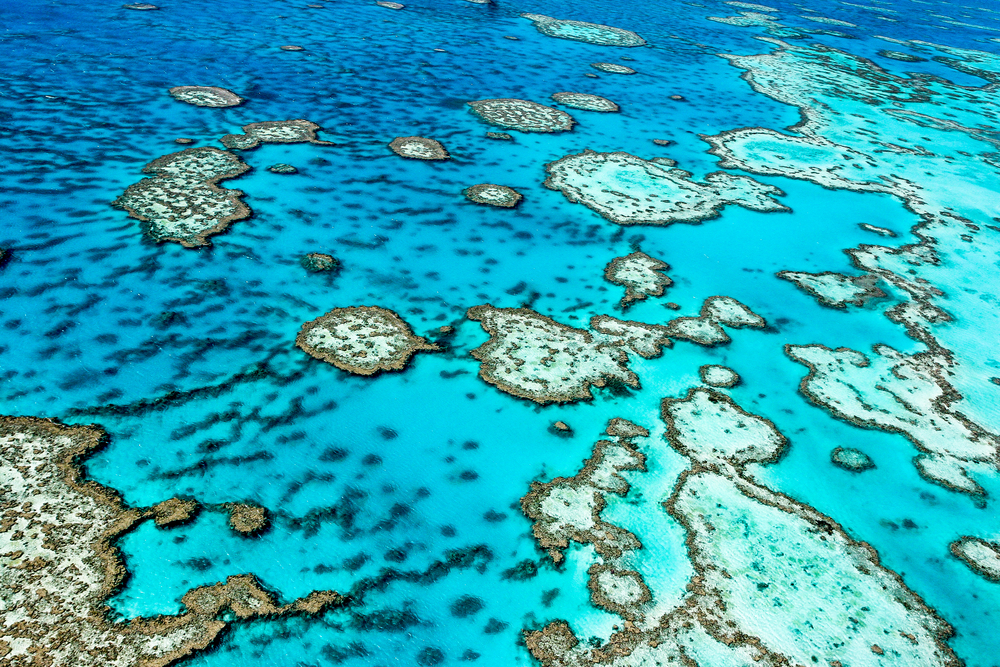
Many people think that experiencing the Great Barrier Reef requires getting wet. Some of the better ways to enjoy the outdoors and the reef is atop the atop the water. Apart from snorkeling and diving, the Great Barrier Reef offers various outdoor experiences:
1. Sailing: Explore the reef from the deck of a sailboat, catamaran, or luxury yacht. It’s an excellent way to combine relaxation with adventure.
2. Helicopter Tours: Get a bird’s-eye view of the reef’s stunning formations with a helicopter tour. It’s an unforgettable experience.
3. Island Hopping: Visit some of the picturesque islands scattered throughout the reef. Each island has its unique charm and marine life.
4. Glass-Bottom Boat Tours: Perfect for those who don’t want to get wet but still want to see the underwater world. These boats have transparent bottoms for coral and fish viewing.
What Is the Best Time to Visit the Great Barrier Reef and Why:
The best time to visit the Great Barrier Reef depends on your preferences. If you want to experience warm waters, vibrant marine life, and excellent visibility for diving and snorkeling, consider visiting during the winter or spring months.
However, if you’re looking for budget-friendly options and don’t mind occasional rain showers, autumn and early spring are great choices. Remember to factor in your desired outdoor activities and tolerance for crowds when planning your trip.
In conclusion, the Great Barrier Reef is a year-round destination that offers something for everyone. Whether you’re an avid diver, a nature enthusiast, or simply seeking relaxation in a tropical paradise, understanding the best time to visit the Great Barrier Reef will help you create unforgettable memories in this aquatic wonderland. So, pack your sunscreen and swimsuit, and get ready to explore the mesmerizing world beneath the waves.
Experience the magic of the Great Barrier Reef during your chosen season—it’s a journey you won’t soon forget.

